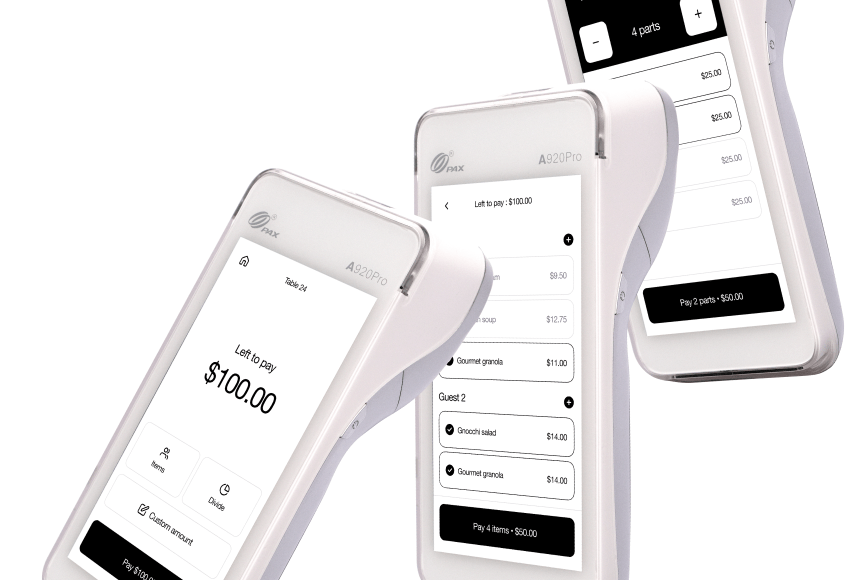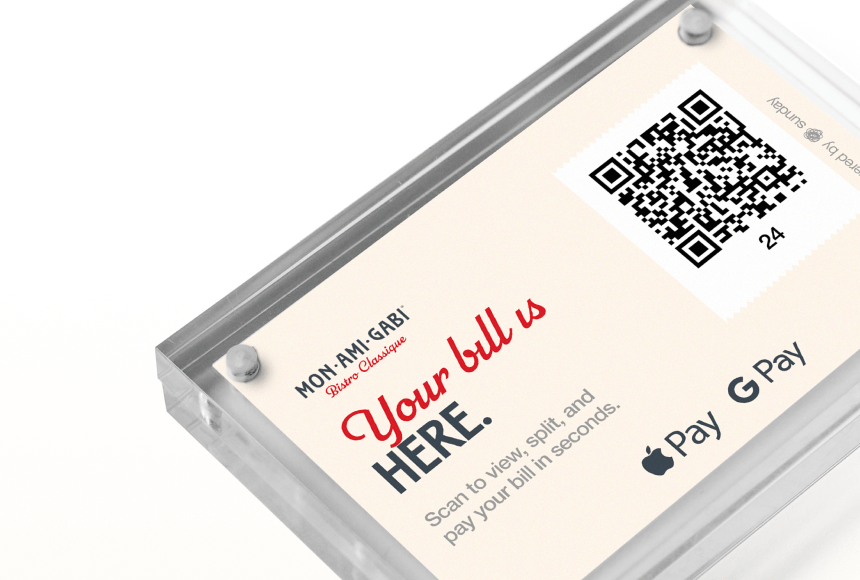
The Game-Changing Power of Smart POS Terminals in Modern Restaurants
Understanding the Smart POS Revolution
Picture this: You own a busy restaurant in the heart of Chicago. It’s Friday night, your dining room is packed, and you need everything to run smoothly—no delays in taking orders, no fumbling with credit card machines, no miscalculations on tabs. More and more restaurants are turning to smart POS (Point of Sale) terminals to keep up with high customer expectations. But what exactly makes these systems “smart,” and why are they increasingly vital to modern restaurant success in the United States?
A few years back, the main function of a POS was simply to process transactions and record sales. Today’s shift toward “smart” solutions transforms these devices into multifunctional management tools that handle everything from online orders to real-time inventory and staff scheduling. They simplify your life, improve the experience for your guests, and ultimately help increase your profits.
Let’s dive into the world of smart POS terminals to see how they’re changing the game for restaurant owners—one tap, swipe, or scan at a time.
Why Traditional POS Systems Fall Short
Before we explore all the benefits of a smart POS terminal, let’s consider the problems with outdated or limited systems. Many restaurants still manage a patchwork of solutions: One program for online ordering, another for payroll, a separate credit card reader, and a completely different tool for analyzing sales. This scattered approach often causes:
- Data discrepancies: If your sales report lives on one platform, your tip tracking on another, and your inventory on a third, mistakes and redundancies become common.
- Limited flexibility: Older POS systems usually aren’t designed to handle multiple payment methods, such as contactless or QR code payments, which can frustrate customers who expect modern options.
- Poor user experience: Many older terminals have a clunky interface, forcing staff to navigate through endless menus just to enter an order or split a check.
- High maintenance costs: Traditional devices can be pricey to repair, and they don’t always offer remote troubleshooting or updates.
All in all, old-school POS systems can put a damper on your restaurant’s workflow, efficiency, and revenue potential. The limitations become even more glaring when you discover how smart POS terminals streamline daily operations and enhance customer satisfaction.
The Core Benefits of a Smart POS Terminal
Smart POS terminals aim to integrate multiple aspects of restaurant management into a single platform. This means fewer devices, fewer software training sessions, and fewer headaches. Here are some of the core benefits that restaurant owners across the U.S. are leveraging:
- Comprehensive data in real time
Imagine logging into your POS dashboard and seeing every relevant metric—daily revenue, table turnovers, popular dishes, and staff performance—all in one place. This instant snapshot frames strategic decisions more clearly, so you’re not flying blind when it comes to operational changes. - Flexible and contactless payment methods
Contactless payments soared over the past few years. According to a report by the National Restaurant Association (National Restaurant Association), nearly 70% of customers prefer contactless payment options when dining out. With a smart POS terminal, you can accept EMV, NFC, mobile wallets, or QR code payments with ease—offering a faster, simpler way for customers to settle their checks. - Enhanced customer experience
In today’s hospitality landscape, customers want convenience. They appreciate not having to wait for the server to retrieve the check, run the card, or bring the slip back to sign. With a smart POS terminal, you might integrate with solutions like sunday, which let guests scan a QR code directly at the table, pay within seconds, leave a tip, and even share a quick Google review. That’s a perfect recipe for an elevated guest experience. - Streamlined online ordering
Many restaurants rely on online orders for takeout or delivery. A smart POS terminal can handle orders from several platforms—like your website or third-party delivery apps—without requiring staff to manually re-enter tickets. This interoperability reduces human error and frees up your team to focus on what truly matters: great food and memorable service. - Automatic updates and cloud-based backups
Because they’re cloud-connected, smart POS terminals automatically update. This means you always have the latest software features, security patches, and performance improvements—no more scheduling overnight system upgrades. Plus, everything remains backed up in the cloud, so you won’t lose key data if a device malfunctions.
Key Features to Seek in a Smart POS System
If you’re thinking about switching or upgrading to a more advanced POS terminal, it helps to know what to look for. Below are key features that ensure you get the most out of your investment:
- Integration with other applicationsCheck whether the terminal can link seamlessly with your different software tools—online ordering, accounting solutions, payroll, or marketing platforms. A robust integration saves time and reduces errors.
- User-friendly interfaceYour team may already be comfortable with a certain style of POS. If the new system is overly complicated, staff might resist using it. Ensure the interface is intuitive, with helpful shortcuts and straightforward navigation.
- Hardware reliabilityA stable and durable device is crucial in restaurant environments where spills, heat, and fast movements are common. Look for sturdy terminals that can handle the daily hustle and bustle of a busy kitchen and dining room.
- Data analytics and reportingComprehensive analytics help make strategic decisions: which menu items to promote, which staff members might need extra training, or what hours you’re most likely to see a surge in traffic. The more granular the data, the better.
- Security complianceRestaurants handle a lot of payment data, so security is paramount. Ensure that your system is compliant with PCI standards (PCI Security Standards) and includes end-to-end encryption for transactions. This step is absolutely non-negotiable to avoid data breaches and protect your reputation.
Boosting Operational Efficiency on the Floor
Let’s zoom in on how smart POS terminals directly impact your day-to-day operations in the dining room. In a typical setting, a server takes an order, walks to a station to enter it, prints a ticket, and then carries it to the kitchen or bar. While that may not sound too cumbersome, multiply it by dozens of trips in a single shift and you’ll see how those seconds and minutes stack up.
With mobile or handheld smart POS devices, the server can:
- Send orders to the kitchen instantly
- Split checks, apply promotions, and accept tips on the spot
- Highlight sold-out items in real time
This removes multiple steps and drastically reduces wait times for your customers. Less waiting, more time for your team to focus on upselling or creating a friendly atmosphere. It’s like trading in your clunky old station wagon for a sleek sports car—everything just moves faster and more smoothly.
The Financial Upside: Increased Revenue and Reduced Costs
Smart POS terminals are not merely a shiny new gadget for your restaurant. They can directly impact your bottom line in several ways:
- Optimized table turnover: Quicker payments lead to faster table turnovers, which means you can seat more guests during peak hours.
- Accurate tip management: Software features that automate tip distribution remove guesswork, making sure your staff is fairly compensated without manual confusion.
- Inventory control: Smart integration with inventory management helps you track and reorder items, so you’re never stuck 86-ing a popular dish or wasting food on overstocked supplies.
- Labor efficiency: Data-driven insights can help you schedule staff more effectively based on traffic patterns, peak hours, and average ticket times.
Consider a mid-sized restaurant averaging 200 covers per day. If upgrading to a smart POS speeds up each transaction by one minute, you open the door to seating more tables or converting that saved time into better guest engagement. Over the course of a month, these small wins accumulate, potentially adding thousands of dollars to your bottom line.
Empowering Data-Driven Decisions
To remain profitable, restaurant owners must master the art of analyzing trends. Whether it’s forecasting how many steaks to order for the weekend or gauging the popularity of your new plant-based burger, data reigns supreme. Smart POS terminals capture detailed sales and operational data, making it easier for you to:
- Build better menus: Identify which dishes are top sellers versus slow movers, and refine your menu or pricing accordingly.
- Pinpoint marketing opportunities: If you notice an uptick in Sunday brunch orders, you can promote that segment more aggressively.
- Track staff performance: Spot top performers who consistently up-sell or receive strong feedback, and provide extra training to those who may be struggling.
- Project future sales: Use historical data to anticipate busy periods, ensuring you have enough inventory and labor.
Armed with real-time insights and historical data, you can make informed choices that significantly shape the future of your business. Think of it as a detailed map of your restaurant’s performance, lighting up the path toward higher profitability and stronger customer relationships.
Encouraging a Stellar Guest Experience
In a world brimming with dining options, customer experience is often the deciding factor that sets you apart. From the moment guests walk in, your staff’s efficiency and your restaurant’s ambiance play a key role in creating that lasting first impression.
A smart POS system can help you go the extra mile:
- Personalized service: Repeat customers appreciate feeling recognized. By integrating loyalty or CRM data directly into your POS, you’ll know if a diner has certain preferences, allergies, or favorite dishes.
- Local engagement: When your POS ties into your online review platforms, encouraging guests to post a quick rating becomes a breeze. With solutions integrated into your POS—like sunday—guests can even scan a QR code and leave a fast review on Google without searching for your restaurant name manually.
- Frictionless payments: Lengthy waits to pay dampen even the best dining experiences. The ability to settle the bill swiftly is a huge plus. Quick, seamless payment flow means your guests walk away smiling (and perhaps tipping a bit extra).
When your restaurant offers streamlined service from start to finish, customers leave with a memorable story and are more likely to return—bringing new friends who want to experience the same level of convenience and care.
Case Study: How a Neighborhood Bistro Thrived on Smart POS
Let’s illustrate how smart POS adoption can fuel a real-life transformation. Imagine “Rosa’s Corner,” a family-owned bistro in Austin, Texas. Before upgrading, the owners used one system for the register, a separate scheduling tool, and by-the-minute manual calculations for their inventory.
After adopting a cutting-edge smart POS terminal, Rosa’s Corner noticed:
- Significant time savings: Servers took orders table-side and sent them directly to the kitchen, reducing errors by nearly 40%. Fewer mistakes meant reduced food waste and happier customers.
- Improved tip management: Tips became transparent and accurate, so staff felt valued, which in turn boosted morale and service quality.
- Higher sales from targeted promotions: By pulling weekly sales data, Rosa’s Corner realized brunch on weekends and Taco Tuesdays were high-performing slots. They introduced special promotions on these days, which further boosted revenue.
- Simplified payment experience with QR codes: Using an integrated payment solution, guests could settle their checks on their phones. The average turnaround for each table improved by several minutes during peak hours.
The result: a stronger local following, engaged staff, and steady revenue growth. Although every restaurant’s story is unique, the universal principle remains—technology, when well-implemented, can inject new life into each touchpoint of your operation.
Addressing Transition Fears
One common concern restaurant owners share is the “fear factor” around migrating to a new POS system. They worry about the cost, the learning curve for staff, or potential downtime that could disrupt business. To mitigate these concerns:
- Budget carefully: Calculate your return on investment by factoring in improved efficiency, fewer errors, and higher transaction speed.
- Seek vendor support: Many POS providers offer robust implementation services, staff training, and technical support. Check if they provide after-hours or weekend assistance, so updates won’t interfere with peak service times.
- Run a pilot test: If possible, implement the system on a smaller scale or in a single section before going full-scale. This approach helps identify issues and fine-tune workflows.
- Have a backup plan: Keep a manual payment method or a second terminal on hand if you’re still uneasy after rollout. This way, you can maintain operations even if technical hiccups arise.
Remember: Adopting a smart POS terminal is akin to upgrading your kitchen equipment. It might require an initial investment of time and resources, but the payoff in efficiency and guest satisfaction is well worth it in the long run.
Looking Ahead: Embracing Change for Sustainable Growth
Technology keeps evolving, and so do customer expectations. Adopting a smart POS terminal is no longer just a nice-to-have; it’s rapidly becoming a baseline necessity for any modern restaurant aiming to preserve a competitive edge in the United States. As more diners crave faster service, contactless payments, and personalized experiences, the role of your POS expands to create deeper connections between your staff, your guests, and your business goals.
There’s no “one size fits all” approach. Rather, it’s about finding the right system—one that readily integrates with your existing workflows, matches your growth ambitions, and stands strong when you’re ready to add new features or scale operations. Whether you run a small café, a high-volume gastropub, or a fine-dining establishment, a well-chosen smart POS terminal can revolutionize your productivity and keep your diners coming back for a “taste” of your efficiency.
Frequently Asked Questions (FAQ)
How do I know if my restaurant is ready for a smart POS system?
You’re probably ready if you’re juggling separate tools for reservations, online orders, and payment processing. If mistakes or inconsistencies are piling up, or your staff seems overwhelmed by outdated hardware, it’s a clear sign to explore a modern POS solution.
Is cloud-based POS technology secure?
Yes, if you choose a reputable provider. Leading smart POS systems offer end-to-end encryption and meet PCI compliance standards. Cloud-based also means automatic updates, so you get the latest security patches without a manual process. However, it’s always important to review a provider’s data safety protocols before committing.
Will training my staff on a new system be complicated?
Most modern POS solutions are designed with user-friendly interfaces. In many cases, staff can get familiar with the core functions in just a few training sessions. Vendors often provide step-by-step tutorials, and some even host on-site demos to make the transition smoother.
Can I integrate loyalty programs and customer feedback with my POS?
Absolutely. Many advanced solutions let you connect loyalty rewards or CRM software so you can track customer habits, purchases, and preferences. If you integrate with a fast-payment solution like sunday, guests can settle their check with a QR code, leave a tip, and even post a quick Google review without hassle—creating a win-win for both restaurant owners and customers.
Is a smart POS solution worth the cost for a small restaurant?
Even if you run a small-scale operation, investing in a smart POS can pay off by reducing manual tasks, preventing costly errors, and speeding up service. Increased table turnover and satisfied repeat customers typically justify the upfront expense in the long run.
Find out more today
Drop us your details below and we’ll reach out within the next 24h
The payment terminal to make your operation simpler.
Connected to your POS, we offer the only payment terminal specifically designed for restaurants.




